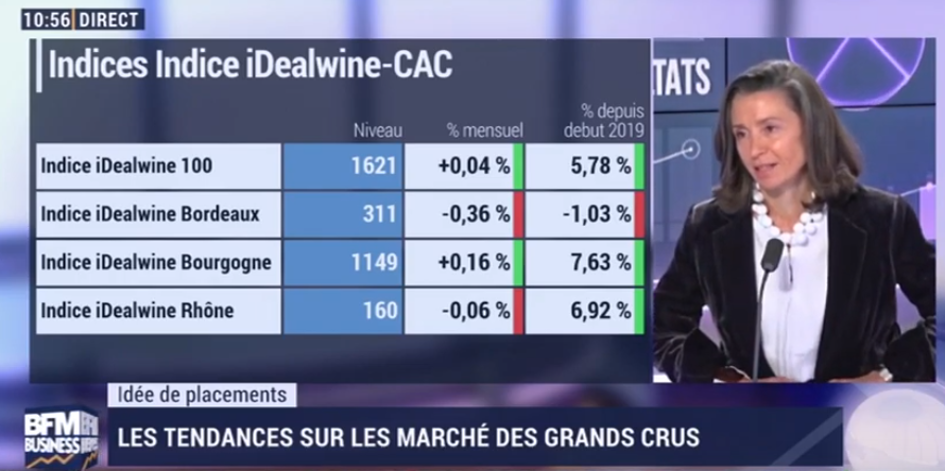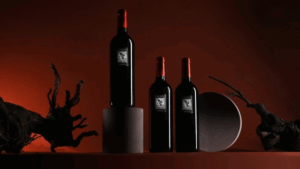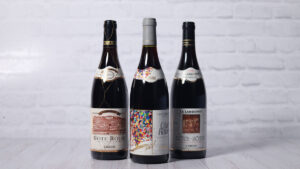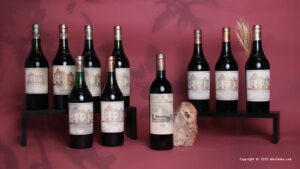
A few days ago, Angélique de Lencquesaing was interviewed on BFM Business News’ Market Watch programme. Here she explains how the market for fine wine at auction turned out at the end of 2019 and brings up the subject of the American tariffs threatening the European wine sector.
In these first days of the new year, it’s pertinent to take stock. What have the market trends for fine wine at auction been like over the past few months?
We are currently putting together our annual auction barometer, but it’s still a bit early to say definitively. The final months of the year are traditionally a very active time for auctions. This was indeed the case for iDealwine with a sales volume of more than €6m during the final quarter of the year.
However, our growth did slow during this period as compared to the year’s general trend: +10% in the final quarter, compared to +25% since the beginning of 2019. At the same time, it’s normal for relative growth to be slightly weaker during periods of high increase in volume.
What is the effect on prices? Does the trend still show an increase for fine wines?
Indeed, the slowing rate of growth is partly due to stabilising prices – stabilising at particularly high levels for some domains.
Bordeaux, and to a lesser extent the Rhône Valley, have seen their prices lower slightly at the end of the year. As for the Burgundy index, it grew by 0.16%. This stabilisation hasn’t spared the famous Domaine de la Romanée-Conti, which reached a peak during the final months of the year.
It’s worth noting in passing that because of the volumes up for sale, the big end-of-year auctions make for a huge amount of wonderful opportunities and good deals for wine enthusiasts, including those looking to invest.
Has the slowing that you’ve mentioned impacted the annual performance of the indexes calculated?
It seems as though the market is more prudent after the heights reached a few months ago, and the global context was less certain during the second half of the year with several threats weighing on the fine wine market: the imminence of Brexit, the US-China trade war, the unstable situation in Asia, particularly in Hong Kong (iDealwine’s principal export area), and taxes on European wines being shipped to the USA since the 18th October. And not forgetting the current social situation in France, where we carry out a little more than 50% of our sales.
During the year 2019, the iDealwine Bordeaux Index decreased by 1.03% whilst Bordeaux increased by 7.63%, pulling up the overall iDealwine 100 Index to +5.78%.
Let’s have a little look at Champagne since we’re just emerging from the festive period. Is this region more prominent in the auctions at the end of the year?
It is notable that Champagne’s vintage cuvées are particularly sought-after in the end-of-year auctions. The most significant results were these:
Krug (Clos du Mesnil 1979: €3040)
Dom Pérignon, historically the most prominent in the auctions (1966: €397)
Bollinger (Magnum R.D. 1976: €1040)
Salon cuvée S (1976: €1094)
Cristal Roederer (1966: €851)
Can Champagne be considered an investment wine?
Don’t be led to believe that an old Champagne is not only undrinkable but also lacking in all value! The prices indicated above show that vintage cuvées indeed increase in value over time. So yes, they are worth investing in, as long as you are patient and able to preserve them well. Fine Champagnes are the most sensitive to temperature and humidity changes in the cellar.
It’s interesting, in this context, to look to the most sophisticated maisons, or others that are now seeing a real renaissance. Apart from the names already cited, others are distinguishing themselves at the moment, such as Tattinger with tis Comte de Champagne cuvée (1990: €517). A 2006 even went for €1502 in Methuselah format (a bottle of 6 litres, the equivalent of 8 bottles).
Selosse is still the most prized of the high-quality estates in the category of producers’ Champagnes (Blanc de blancs Extra Brut 1996: €730)
Jacquesson and Philipponnat’s Clos de Goisses are also superb, modest labels whose progress you should follow closely.
You mention understated names and sophisticated labels…Are we finding these more and more in all regions now, not solely in the great, traditional vineyards?
Yes, it’s a great source of pride for us, a French business promoting the treasures of our vineyards to more than 60 countries, to see that there is not one corner of our wine-growing land that’s escaping the interests of wine enthusiasts.
As we’ve often said here, the auctions are no longer just a stage for the beautiful, traditional regions, Bordeaux, Burgundy and the Rhône, but now also for the Loire, Provence and Languedoc-Roussillon, since we’re talking about domains of great excellence.
At the end of the year, it was an unexpected region that saw the success of our record auction. On the 4th December, a bottle of 1992 Grange des Pères was auctioned for €5219.
Wines from Grange des Pères aren’t unknown…
That’s true, and they’ve been sought by wine enthusiasts from across the world for several years now, but even if their success has been gradually increasing, this domain has never reached such price heights before.
I should specify that 1992 was the first vintage produced by this iconic property. Another particularity is that the sale was offering a vertical from 1992 to 2016.
Among the lots up for sale, three bottles passed the threshold of €1000: 1992, 1993 and 1994, the first three vintages produced. It was a French buyer who finally won the 1992 after an epic bidding war: a +2740% increase on the initial price!
The white wines from the domain, even rarer, also made it to the front page: the 1996 was for example auctioned at €448 and the 2004 at €552.
As you can see, no region is hidden from the mission of wine enthusiasts to find the finest bottles, the highest quality and produced by talented winemakers. It was the ‘collector effect’ that contributed to this specific record case.
You also mentioned the taxes imposed on wines entering American territory. Should we be worried about the decisions the Trump administration could make?
We raised these concerns for the sector in October when the 25% tax on French wines was first imposed.
We’re very concerned about this, and today have addressed an open letter to President Macron in order to alert him to the impact of a measure that risks increasing these taxes to a rate of 100%.
It’s important to remember that the United States is the principal export market for French wines and spirits, so this is a crucial issue for the entire sector. The wine industry has found itself in the position of being a collateral victim in conflicts that don’t concern the sector at all. The first hit, last October, came about to sanction a dispute between Airbus and Boeing. This time, it’s the so-called GAFA tax that is the cause of this threat, again an issue that has nothing to do with wine. Whilst iDealwine is clearly a digital platform, we don’t fall under the GAFA label.
More seriously, whilst the decision taken in October hasn’t yet produced its full effect (the stocks are still good, and some of the biggest names in Champagne and spirits have increased their exports in the past few weeks), it’s in 2020 that we’ll really be able to feel it. Imposing 100% on every bottle entering American territory would bring an immediate halt to our exportations.
The Americans are very concerned as well. Wine critic Antonio Galloni addressed President Trump to remind him that the wine industry employs 1.74 million people. A third of sales are imported wines, 75% of which are European. Galloni fears that wine will even lose its popularity to other drinks.
We can’t stand by in such a situation, in a country where the viticultural industry employs 500,000 people and represents €13.2 billion of exports, the 2nd contributor to our export market in 2018 after the aeronautic sector.
Read our Open letter to President Macron here



